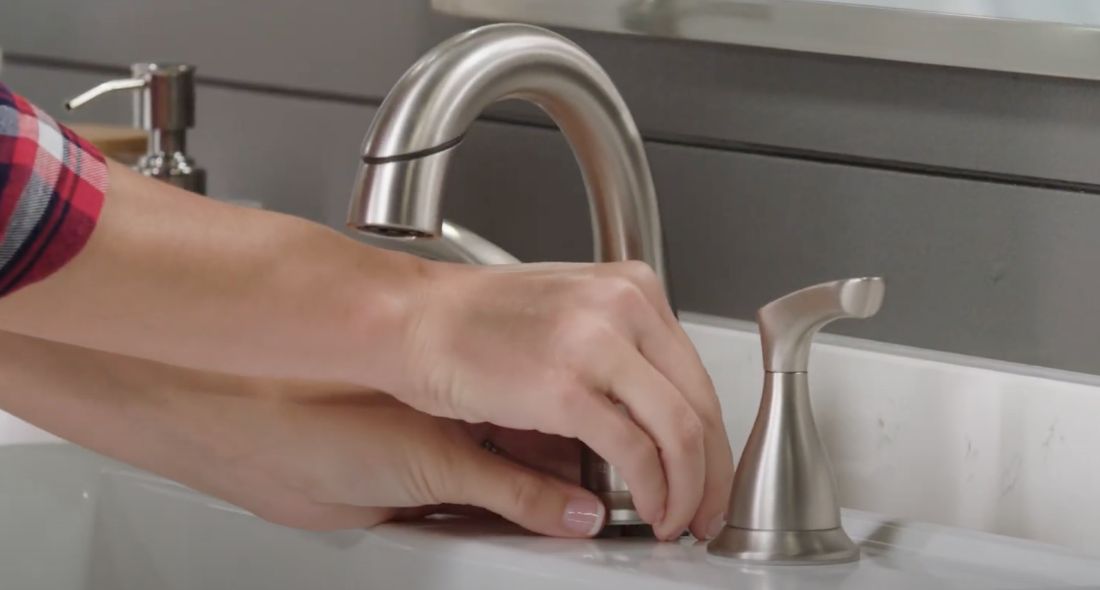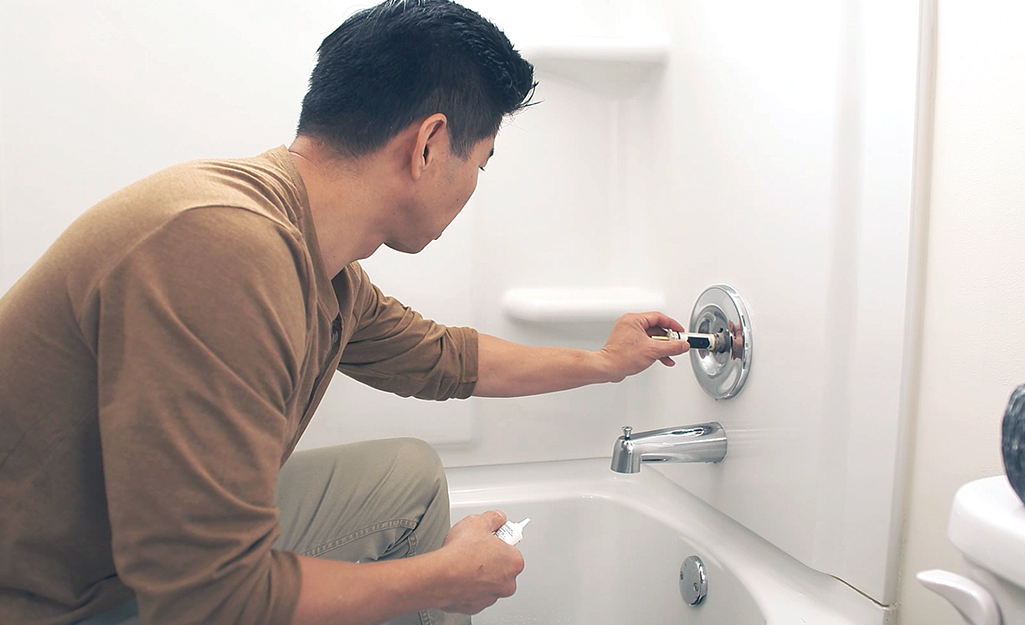Which It's Vital to Rectify a Leaking Faucet
Which It's Vital to Rectify a Leaking Faucet
Blog Article
They are making a few great pointers about What Causes Leaky Faucets & How To Fix Them as a whole in the article down below.

Leaking taps may feel like a small inconvenience, but their effect surpasses simply the aggravation of the sound. From wasting water to sustaining unneeded economic prices and health risks, ignoring a dripping tap can bring about numerous effects. In this post, we'll look into why it's critical to resolve this typical household concern without delay and successfully.
Wastage of Water
Environmental Impact
Dripping taps add dramatically to water wastage. According to the Environmental Protection Agency (EPA), a solitary faucet leaking at one drip per second can squander greater than 3,000 gallons of water annually. This not only pressures water resources yet likewise affects ecological communities and wildlife depending on them.
Step-by-Step Guide to Dealing With a Dripping Faucet
Tools Called for
Before attempting to deal with a dripping tap, gather the needed devices, including an adjustable wrench, screwdrivers, substitute components (such as washers or cartridges), and plumber's tape.
Common Tap Issues and Their Solutions
Recognize the kind of tap and the certain problem triggering the drip. Usual troubles consist of damaged washers, corroded valve seats, or defective O-rings. Refer to producer directions or on the internet tutorials for detailed advice on repairs.
Financial Prices
Raised Water Costs
Past the environmental impact, dripping faucets can inflate water bills considerably. The gathered waste in time translates right into greater energy expenditures, which might have been avoided with prompt repair work.
Potential Residential Or Commercial Property Damages
Additionally, prolonged dripping can result in damage to components and surfaces surrounding the tap. Water buildup can trigger discoloration, rust, and even structural concerns if left neglected, leading to extra repair work costs.
Health Problems
Mold And Mildew and Mold Growth
The constant existence of moisture from a trickling tap creates an excellent atmosphere for mold and mildew and mold growth. These fungis not just compromise interior air high quality yet also present health risks, particularly for people with respiratory system problems or allergic reactions.
Waterborne Diseases
Stationary water in dripping taps can become a breeding ground for germs and various other virus, raising the threat of waterborne conditions. Impurities such as Legionella germs flourish in stagnant water, potentially causing major health problems when ingested or inhaled.
Do it yourself vs. Professional Repair work
Advantages and disadvantages of Do It Yourself Repair Work
While some may attempt to fix a trickling faucet themselves, do it yourself repair services feature their own collection of obstacles. Without correct expertise and tools, DIY attempts can intensify the problem or result in incomplete fixings, extending the issue.
Advantages of Employing a Professional Plumber
Employing a professional plumber makes sure that the underlying cause of the leaking tap is resolved properly. Plumbing professionals have the know-how and equipment to detect and fix tap issues efficiently, conserving time and reducing the danger of additional damages.
Ecological Obligation
Specific Contribution to Conservation
Taking obligation for fixing trickling taps lines up with wider initiatives towards water preservation and ecological sustainability. Every individual's actions jointly make a considerable impact on preserving priceless sources.
Lasting Living Practices
By prioritizing prompt repairs and taking on water-saving routines, individuals add to sustainable living techniques that profit both present and future generations.
Safety nets
Normal Upkeep Tips
To stop dripping taps, carry out regular maintenance such as cleaning up aerators, evaluating for leaks, and changing damaged parts without delay. Additionally, think about mounting water-saving devices or updating to extra efficient components.
Relevance of Prompt Repair Works
Attending to trickling taps as soon as they're discovered avoids additional water wastefulness and possible damages, inevitably saving both water and cash over time.
Effect On Residential Or Commercial Property Value
Perception of Well-Maintained Home
Keeping a residential or commercial property in good condition, including addressing upkeep concerns like trickling faucets, enhances its regarded value and desirability amongst prospective customers or renters.
Impact on Resale Value
Properties with properly maintained plumbing fixtures, consisting of taps, command higher resale worths in the property market. Dealing with trickling taps can contribute to a positive perception throughout building assessments and negotiations.
Verdict
Resolving a dripping faucet exceeds simple comfort; it's a crucial action towards preserving water, reducing financial costs, and safeguarding health and residential property. Whether via do it yourself repair services or expert aid, doing something about it to take care of leaking faucets is a tiny yet impactful method to promote liable stewardship of sources and contribute to a much healthier, a lot more sustainable future.
How to Fix a Leaky Faucet: Step-by-Step Repair Guide
A leaky faucet may seem like a simple annoyance, but if it's not fixed promptly, that leak could cost hundreds to potentially thousands. From water damage to mold, mildew, and high water bills, even a tiny leak can be catastrophic if left unattended. Damage like this can even affect the overall value of your home, so it's important to take the right approach for leaky faucet repair. You may need the help of a plumber in some cases, but we've got a few tips you can try on how to fix a leaky faucet before calling the pros.
Four Faucet Types
When you're learning how to fix a leaky faucet, the first step is knowing what kind of faucet you're working with! There are four common types.
Cartridge Faucets
Cartridge faucets come in one- or two-handled varieties. In one-handled cartridge faucets, hot and cold water combines in a single cartridge. In the two-handled versions, hot and cold water are controlled separately and mixed in the faucet.
Ball Faucets
Ball faucets have a single lever you push up and down to adjust the pressure and rotate to change the temperature. A slotted metal ball controls the amount of water allowed into the spout.
Compression Washer Faucets
They're the oldest type of faucet, but they're still used in many homes — especially older ones. Compression faucets have two separate handles that, when turned, raise or lower the washer that seals a water valve. This valve stops water from flowing through the faucet when it is turned off.
Disc Faucets
Disc faucets rarely need to be repaired due to their maintenance-free design. The water flow is controlled by two discs — the upper one raises and lowers against a fixed lower disc, creating a watertight seal. If your disc faucet starts leaking, you may need to replace the seals or clean residue buildup from the inlets.
Fixing a Leaky Faucet
Step 1: Turn Off the Water
Whether you're learning how to fix a leaky bathtub faucet or how to fix a leaky kitchen faucet, always turn off the water supply to your working area when you're fixing a leak. The last thing you want is a flood added to your list of things to fix.
Look for the shutoff valves below your sink or around the tub and turn them clockwise to stop the water flow. If your faucet doesn't have shutoff valves, you may need to turn off the water for the whole house. Check to make sure it's off by turning the faucet on. If nothing comes out, you're ready to start the repair.
Step 2: Take Apart the Faucet
How you disassemble your faucet depends on the type of fixture you have. You can use a flathead screwdriver to remove the caps on top of the handle or handles for cartridge and compression faucets. Inside, you should see handle screws. Unscrew these with a screwdriver to remove the handle.
Disc- and ball-style faucets will typically have an inlet screw near the handle, and removing that will reveal the interior of the faucet.
Detach the Valve Stem
For cartridge- and compression-style faucets, you'll see the inner valve stem or cartridge once you remove the faucet handles. If you have a compression faucet, unscrew the brass valve stem. If you have a cartridge faucet, pull out the cartridge. If your cartridge has been in place for a while, it may require some tools or extra force to remove it due to mineral deposits.
Examine and Replace Parts
Once you've removed the parts, check them out to confirm what needs to be replaced. You may see corroded rubber washers, O-rings, stems, or cartridges. On a ball-style faucet, check the seats and springs for damage.
If you need to repair a leaky disc faucet, check the inlet and seals on the lower disc.
Once you determine what parts must be replaced, visit your local hardware store. Bring the damaged parts with you to ensure you can purchase the correct components to replace them.
Clean Valves and Faucet Cavity
If you've removed a stem or cartridge, you may notice mineral buildup in the faucet's threads. Use white vinegar to clean the valve seat by soaking it for a few minutes, then scrub it away with a soft toothbrush and rinse with warm water. You can also clean the interior of the faucet in the same way.
Reassemble the Faucet
Once your faucet is cleaned and the required parts have been replaced, it's time to reassemble it. Put the pieces back together and slowly turn the water supply back on. Doing this slowly is crucial because too much initial water pressure can damage the new hardware you've just installed.
https://homewarranty.firstam.com/blog/how-to-fix-leaky-faucet

I stumbled upon that page about 4 Common Reasons for a Leaky Faucet when perusing the web. Enjoyed reading our piece of writing? Please share it. Help others find it. Thanks so much for going through it.
Report this page